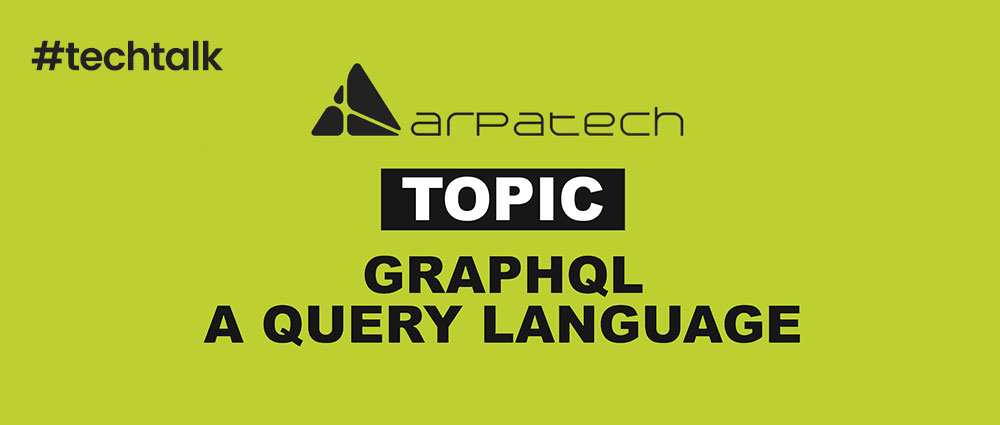Understanding the GraphQL Query Language

GraphQL (QL stands for query language) was invented by Facebook in 2012. It was introduced when the team, while creating a mobile application, required a strong data-fetching API that could describe Facebook and a simple platform for the product developers to learn. That’s when the querying language came into being and became famous in the software industry.
What is GraphQL?
GraphQL is the query language and a server-side runtime for APIs (application programming interface) which enables to provide clients the data requests and helps them to prioritize. In other words, with the help of GraphQL, the client’s application gets the exact and accurate data that is required from an API. It also allows the client application to call a single endpoint for certain types of requests that are made.
Why is GraphQL used?
GraphQL is developed with the idea to enhance the APIs, make their speed fast and flexible. GraphQL makes the APIs developer-friendly and integrated within an IDE (integrated development environment). It is like SQL but for the front-end.
With the help of GraphQL, the flexibility of API stays well-managed by either adding or reducing the field without making any changes in the pre-existing queries. Developers can easily create APIs with the method they like by GraphQL specification that guarantees the perfect function to clients in an expected manner.
When you send a GraphQL query to the API, you get exactly what you are looking for. It has the ability to return the required and predictable results. When apps use GraphQL query, they function faster and stay stable because it is controlled by the data not the server.
The query process stays smooth with GraphQL as it asks you for your requirement in a single query. Then, it saves the bandwidth and decreases the waterfall requests which makes the functions faster. Moreover, it permits the clients to send across their data specifications.
In GraphQL, you can make your API requests smaller by specifying the preferable types and fields. In the case of client-side applications, the reduction of API requests relies on the data that comes from APIs. If the amount of data that is transmitted is improved, the performance essentially gets better.
GraphQL uses less time in the documentation and navigation of APIs because it is declarative for fields and types that cannot be declaratively stated. Therefore, GraphQL schema can also be documented.
Basic Components of GraphQL
There are four basic components of GraphQL
- Schema
- Query
- Mutation
- Subscription
1. Schema
A GraphQL schema is here to define the functionalities the clients are able to make use of when they are connected to the GraphQL server. Basically, the GraphQL schema is the focus of GraphQL server implementations. The procedure is carried when the functionality is communicated to the clients.
Schema explains the nodes on the data graph and the relationship of nodes among each other. The syntax that is built to write schemas is known as Schema Definition Language (SDL). The key element of schema is a Type.
2. Query
The query serves as the medium of communication between the client application and the GraphQL server. A request is created to communicate with the GraphQL serve for reading or retrieving the values. In simple words, a query is a request a client makes. The query is one of the fields that are there to support points and arguments to arrays.
The key elements of a query are fields and arguments.
3. Mutations
Just like a query, the mutation also sends requests to the clients but the highlight is the data fetching. Like any other data platform, it requires a method of modifying the data on the server-side.
If the object type is returned by the mutation field, nested fields are then formed. This helps in getting the object’s new state once an update occurs.
4. Subscription
Subscription is one of the components of GraphQL that the query language introduces for the real-time connection. It is offered to the server to get updated instantly about the necessary events and conditions.
The send request of data depends upon the occurrence of specific events. Every time a certain event takes place, the server utilizes the connection that helps push the event data to the client who is subscribed. When a client is subscribed to an event. It will help in the initiation and keep the connection strong and consistent.
Drawbacks of GraphQL
1. Caching
The implementation of a particular cache with GraphQL is more difficult than its implementation in REST.
It is complex in GraphQL because of the different nature of every query. Every query is different although they can be part of the same entity and be codependent. Most of the libraries that are created on GraphQL have a competent caching mechanism.
Conclusion
GraphQL is a new technology introduced by Facebook and its implementation has been quite practical and beneficial for the users. It has proven to be the solution for many data resources; all you need to do is understand its underlying concept and benefit from this language.
Arpatech
Latest posts by Arpatech (see all)
- How to Optimize Facebook Business Page - January 14, 2022
- Importance of E-Commerce Websites - December 30, 2021
- All About Data Management Platforms - December 17, 2021

 Careers
Careers


